Last Chance to Catch NYC's Holiday Notalgia Train
We met the voices of the NYC subway on our nostalgia ride this weekend!


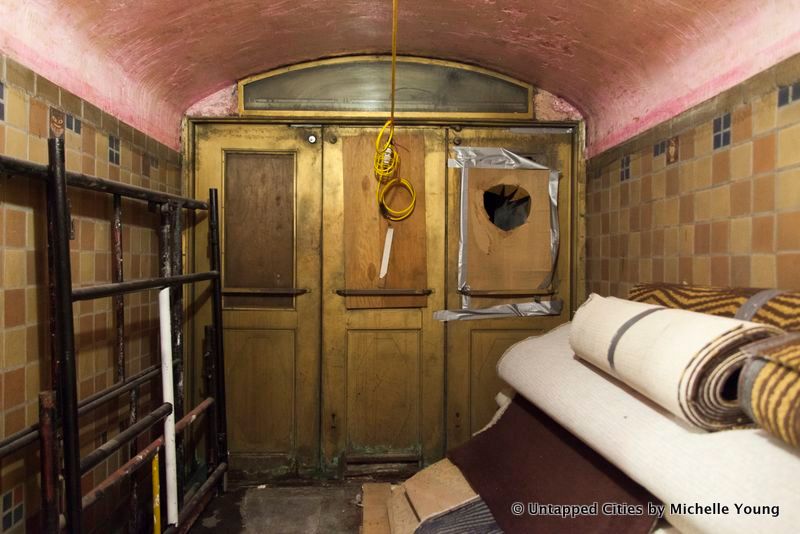
Former entrance under the New Yorker Hotel that provided direct access to Penn Station
Roughly 200 feet beneath the Wyndham New Yorker Hotel lies a secret: an underground tunnel that connected the establishment to Penn Station. It’s mostly forgotten, used primarily as storage, but it once enabled guests to go directly from the subway and trains to an elevator and up into the hotel. A porter would greet you at the entrance and take you the rest of your way. Direct access was popular for the luxury buildings of this time – the Woolworth Building and the Knickerbocker Hotel are other examples.

Built in the late 1920s and opened in 1930, The New Yorker Hotel was built in the late 1920s and opened in 1930, with all the technological advancements and amenities of the time. This included its own power plant, an ice skating rink, and much more. Its Art Deco style and close proximity to the Empire State Building made it a haven for tourists, celebrities and permanent residents throughout the years – Nikola Tesla lived and died there. But being near Penn Station was also a huge draw and exclusive access to Penn and the subway lines was a huge selling point for the establishment.
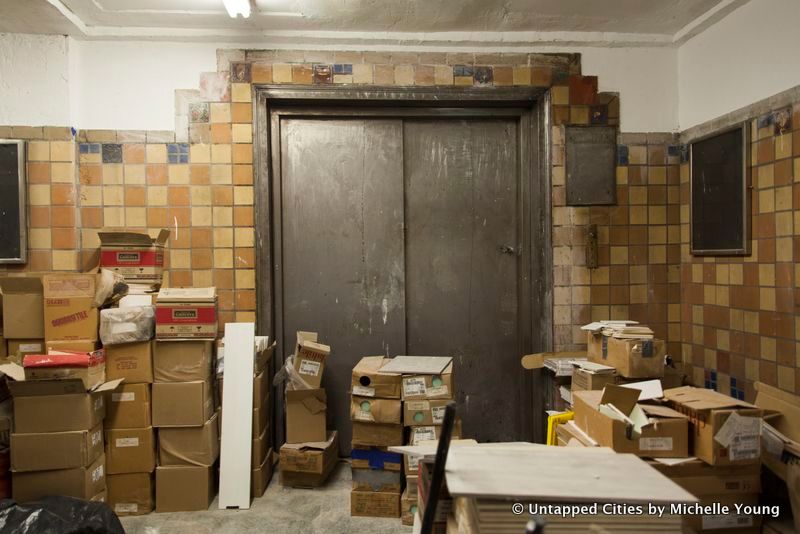
Elevator that took guests up to the lobby of the hotel
When the hotel opened, the Long Island Railroad was in operation but the Eighth Avenue Subway (the A/C/E lines today) was not even completed yet. It would open in 1932. An early advertisement states: “Your room is only three minutes from your train through your own private entrance to the Pennsylvania and Long Island stations. This entrance also connects with the New York subway system and when the new Eighth Avenue subway is completed in the fall of 1931, there will be subway entrances at the very doors of the hotel.” Like all things transit and New York, the opening of the Eighth Avenue subway was delayed a bit.
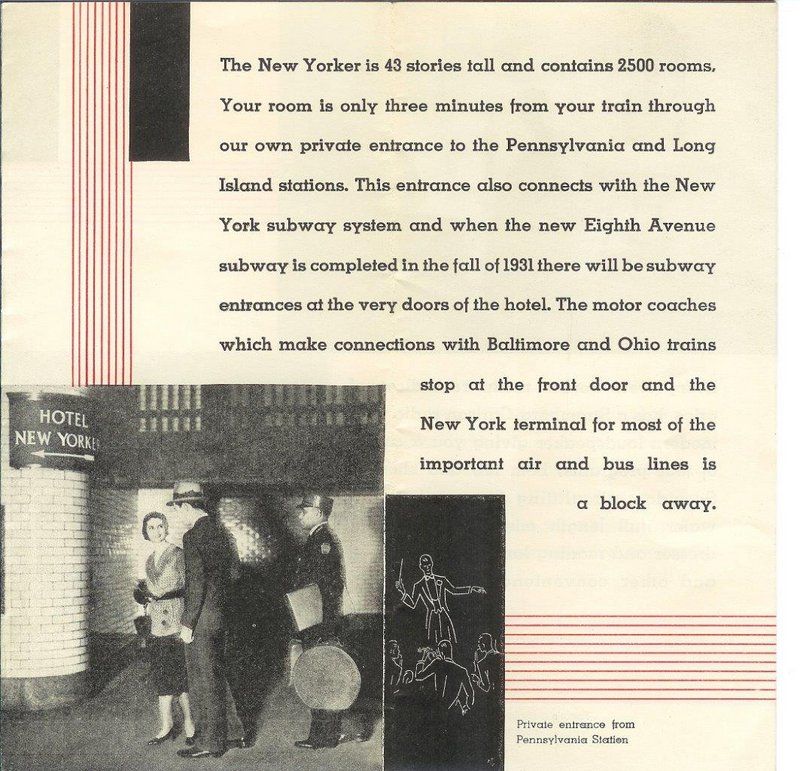
“There is a direct tunnel connection to Pennsylvania Stations, a subway entrance right in the hotel,” said a 1950s advertisement for the New Yorker Hotel. “All within a brief radius of your comfortable room at The New Yorker.” Maps created by the hotel show the multi-modal access – all roads and rails led to The New Yorker Hotel it seemed.

1930s brochure that noted the private tunnel, the multitude of transit access and landmarks nearby
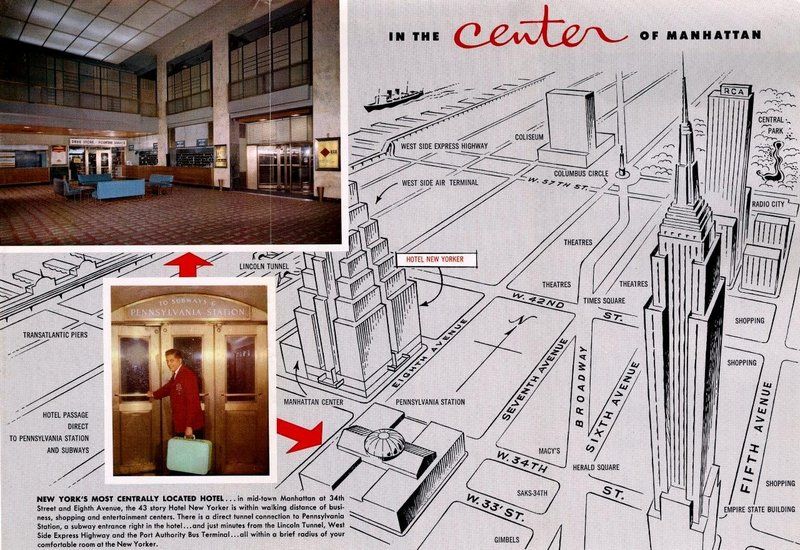
1950s brochure shows a photograph of the entrance and the original sign
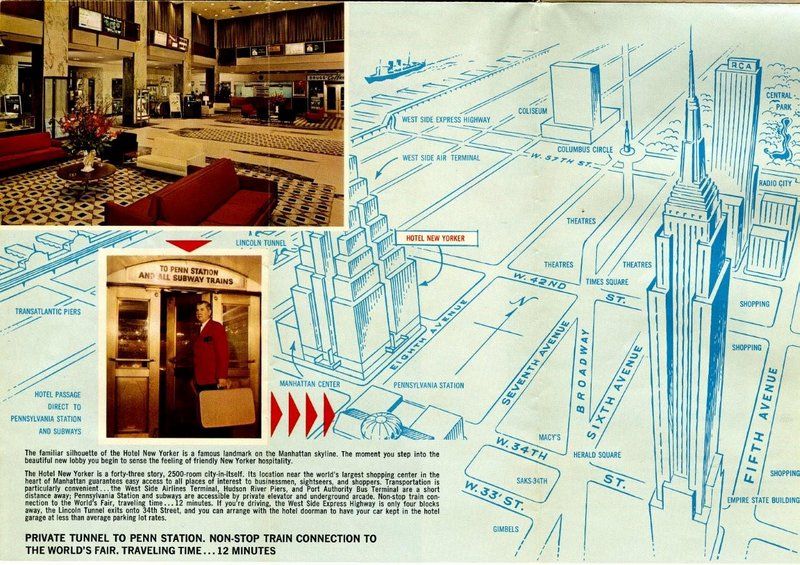
This brochure, which seems to have been created for the World’s Fair in 1964 notes the “private tunnel to Penn Station” and the “non-stop train connection to the World’s Fair,” which they claimed would take 12 minutes.
But then in the late 1960s it closed and the tunnel that ran below West 34th
street disappeared from history, with many considering it an urban legend. But in the last few years, the New Yorker Hotel has been very vocal about it, turning the myth into reality.
“The hotel is opening up with information and history, to get more media exposure,” Joseph Kinney, the New Yorker Hotel’s Senior Project Engineer and unofficial historian told us. “I think if people really knew the history of the hotel and it was out there, people would come here and stay just because of the history.”

Tunnel heading back to the subway entrance door
Joseph Kinney was kind enough to give Untapped Cities a special look at the tunnel and the rest of the hotel. The tour started with the now closed Manufacturers Trust bank, which is being converted into a bar. People will eventually be able to dine and drink in the vault, sitting next to what some used to consider extremely valuable, the safety deposit boxes.

Tunnel heading up to the subway entrance door
But several layers of concrete hid the real gem: the prized New Yorker tunnel. You have to go through an endless maze to get there: between elevator rides, staircases, corridors of construction and even a brief stop in the laundry room, we finally arrived at the famous door. It may look broken down now, but this used to be the cultural hub to New York’s prized transportation systems.
“Originally, it was possible to walk underground to the trains and all the way until the Empire State Building by connecting to the underground concourse,” according to Kinney.

Elevator in back left
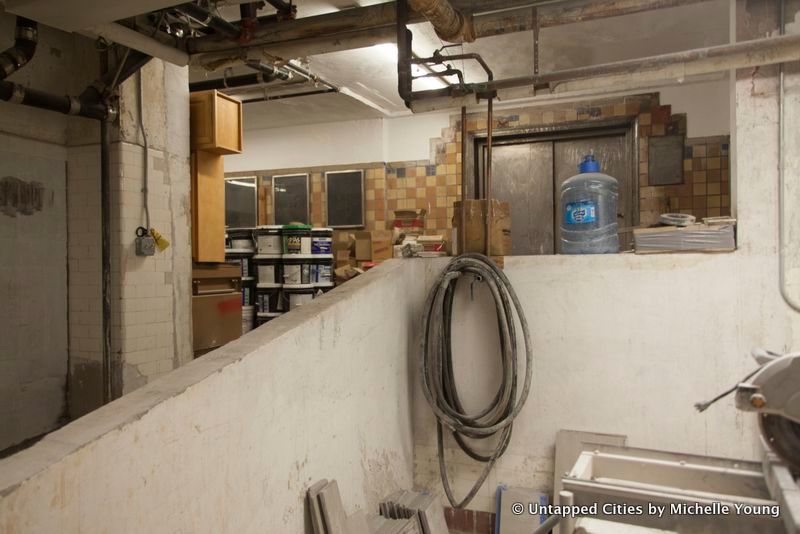
These days, the tunnel entrance is in bad shape. There are huge paint chips missing from the pink ceiling and construction equipment lines the floor. The door, which used to look like the back of a subway car, is pretty worn down with a window covered by a cardboard box and some duck tape. Behind it is cinderblock, concealing the entrance to Penn Station. We even went through Penn Station to locate where the tunnel would have led out to, but it’s in the Long Island Railroad area currently undergoing renovation.

Cinderblocked wall behind the subway entrance
But despite its rundown look, there is still over 120 feet of tunnel here in the original Art Deco style, according to Kinney. The design of the hallway also takes inspiration from Mayan culture, with some of the wall tiles contain Mayan symbols. The New Yorker Hotel is filled to the brim with history, something that both Kinney and the establishment hope to make more popular.

Tunnel heading away from the subway entrance door
“If you know any place, it’s like two-dimensional, like flat if you don’t know their history or its history,” said Kinney. “But when you learn the history, it becomes three-dimensional. It becomes meaningful and interesting.” To see more about the New Yorker’s underground tunnel, check out our video.
Uncover more secrets and hidden remnants of the original Penn Station on an upcoming walking tour!
Tour of the Remnants of Penn Station
Next, discover the Top 10 Secrets of the New Yorker Hotel.
Subscribe to our newsletter